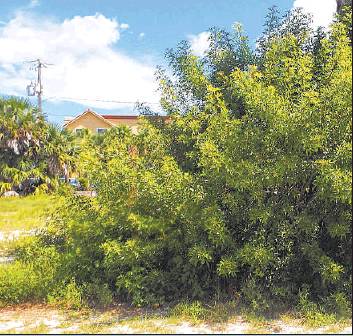GOING NATIVE
Once sleepers, Brazilian peppers have taken over
By C.J. McCartney Correspondent
According to the U.S. Fish and Wildlife Service, invasives are nonnative plants that once introduced into an ecosystem can cause harm — environmentally, economically or health-wise. Not all exotic plants become invasive, but when they do, these intruders explode in numbers strangling native plants and disrupting natural wildlife communities and ecological processes.
In “Going Native,” Homescape correspondent C.J. McCartney hunts down Florida’s most common invasive plants and provides tips on eradicating, controlling or managing these pesky plants.
Once sleepers, Brazilian peppers have taken over thousands of acres in Florida. Brazilian peppers are illegal in Florida. Too bad the tree doesn’t care because it just keeps spreading, producing thousands of berries and taking over. Introduced to Florida in the 1840s, it did not become a problem until the 1960s — a lag time of 120 years.
Laurie Albrecht, Environmental Horticultural Extension Agent of Palm Beach County, said there are different reasons why non-native plants become invasive over time, including: the plant’s population may be expanding, but not noticed the plant cannot rapidly expand until its pollinator arrives the plant reaches an optimal habitat
In the case of the Brazilian pepper, The Nature Conservancy’s Biologist Cheryl Millett said the plant’s fruit might provide a hint as to why this one has become so prolific.
“You can bet something tasty like its berry will be spread by birds or other animals,” Millett said.
And spread it does — from South Florida to Duval County.
Brazilian pepper now occupies more than 700,000 acres in Florida and costs taxpayers millions of dollars each year in efforts to eradicate it.
According to the Department of Environmental Protection, it threatens environments by its dense growth, high seed production and lack of boundaries — from roadsides to natural pinelands, hammocks and mangrove islands. It grows along St. Johns County beaches, and in homeowners’ yards.
Groups of dedicated volunteers remove it from our beaches.
Communities and neighbors working together can eradicate this invasive and keep it out.
Once it’s gone, cover the area with native plantings, such as holly trees and beauty berries. These berries are healthy and support our wildlife, not destroy it.
